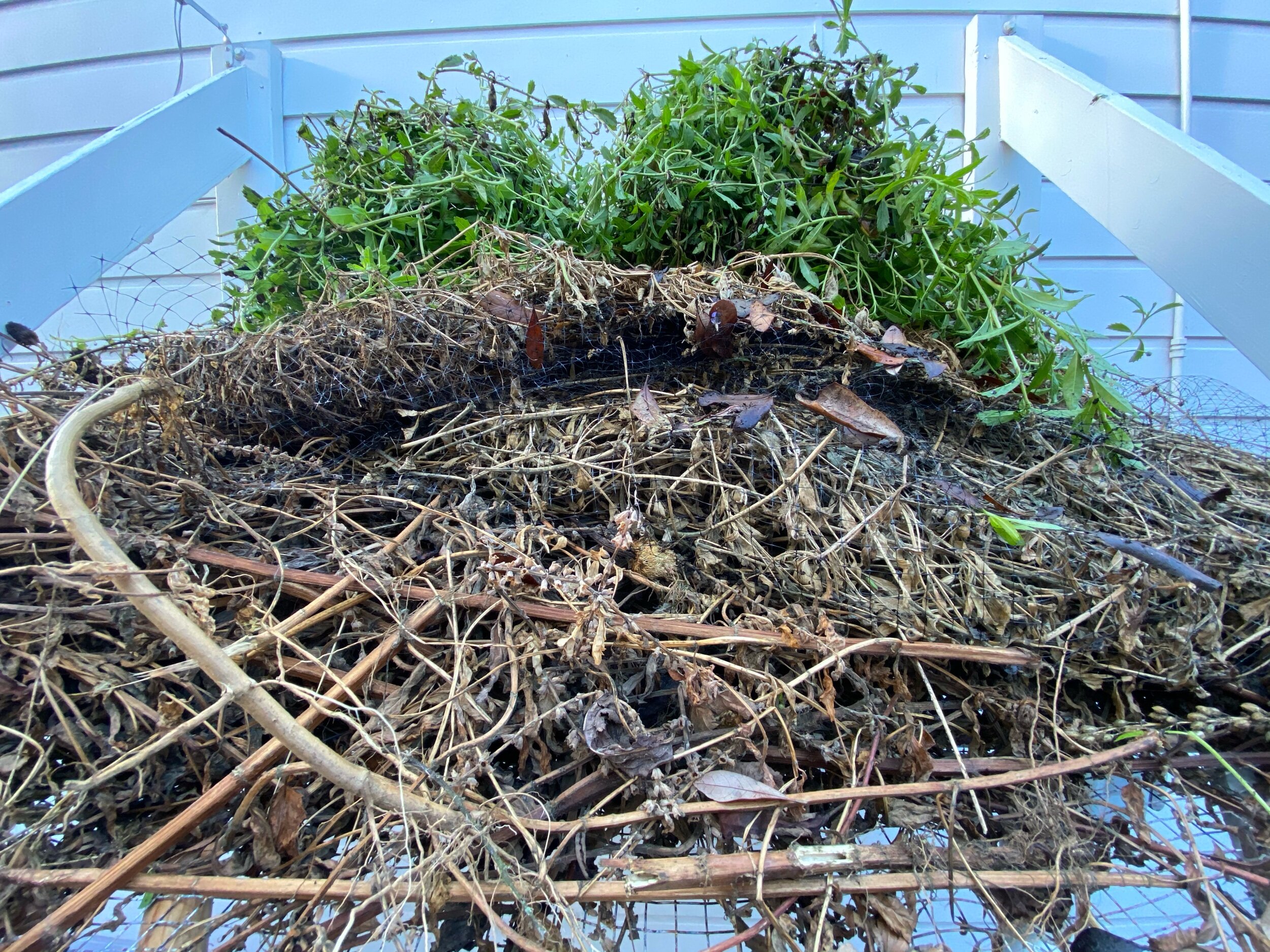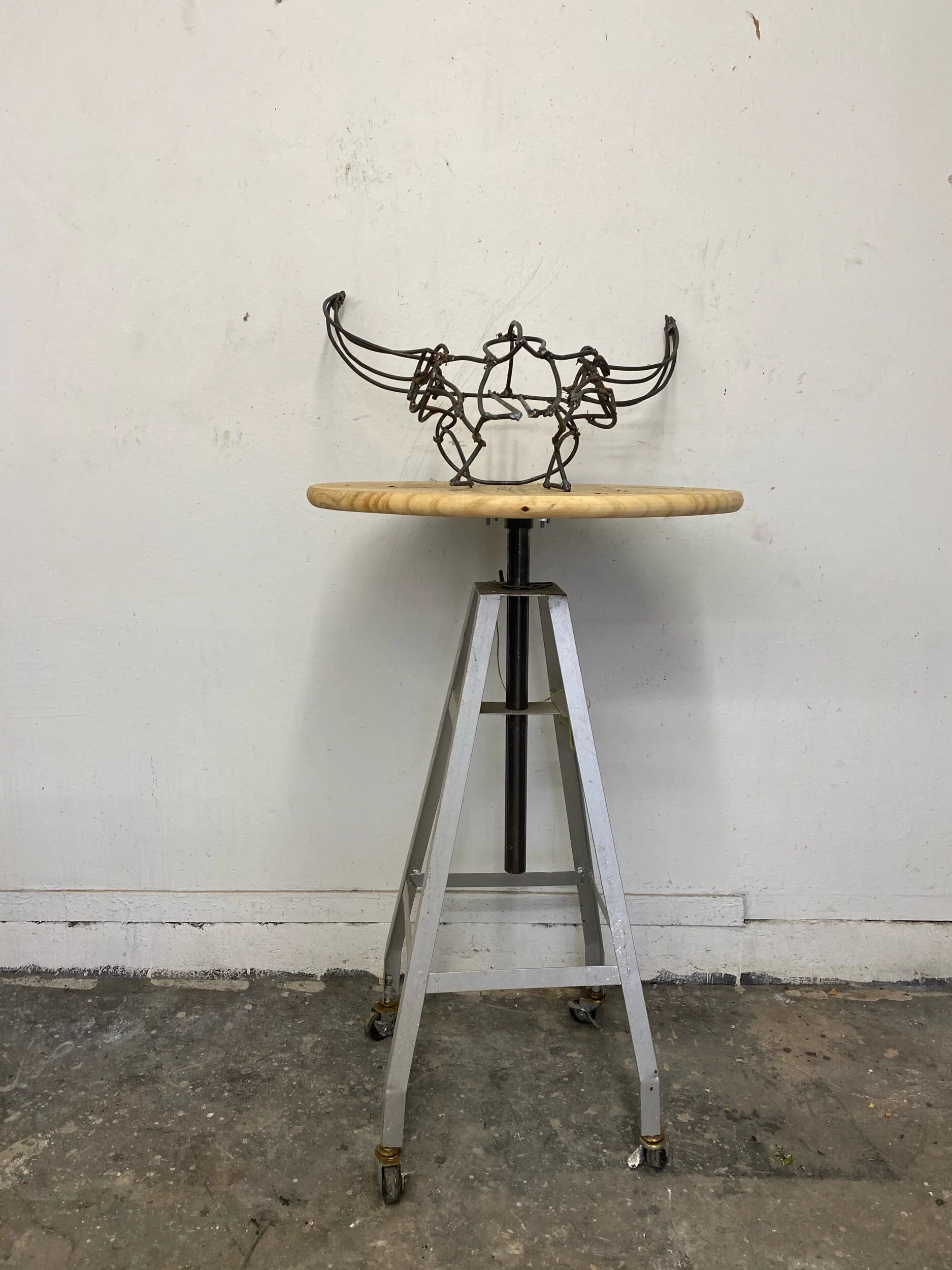In a nutshell, this is what I hope to achieve with my site-specific piece, Symbiosis.
I am rethinking the uses of yard clippings.
Your Custom Text Here
In a nutshell, this is what I hope to achieve with my site-specific piece, Symbiosis.

I am rethinking the uses of yard clippings.
When it comes to the environment in the 21st century grasslands beat trees when it comes to carbon sequestration. Our planet is a living breathing organism, impacted by our actions, always changing. I believe It is important that we constantly observe and evaluate how it changes as humans developed and expand across it.
Trees are a thing of beauty but they store carbon above ground in their trunks and limbs.when they catch on fire the trunks and limbs release their carbon into the atmosphere. Grasslands storing carbon underground release little carbon when they catch on fire. In addition the grasslands are a giant sponge soaking up water that prevents dryness and fires.
With the forest fires we have suffered world wide it is time to plant more grasslands and turn these areas suffer ending from droughts into giant sponges for soaking up water and carbon. When the ground is moist then we can can start adding back trees.


Drying coastal prairie native grass in my studio.
A male southern carpenter bee- This bee was sleeping on my Salvia the morning of July 4th. The male wild bees do not live in nests. When they emerge they fly out looking for females to breed with. When the females return to their nest to sleep the males curl up to an petal.

Xylocopa micans I

Xylocopa micans II

Xylocopa micans II ghost

Image from my video
“The soil is the creative material of most of the needs of life. Creation starts with a handful of dust.” - Dr. W. A. Albrecht ph. D.
That is a powerful thought. How important is soil to our health? For me it is clear.
And it is not dirt, it is not clay, it is humus living soil.
This quote is deeply tied to all of my current work, in The Endangered Knowledge piece that I am in the early stages of welding soil is the material that will become the protective layer of the keystone species, in Subterraneous Secrets soils energy is stabilized and captured through root systems, in Mute Testimony, it records its history, in Gust the life it provides is Endangered. In the photography of life in my cement pond, it establishes natural rhythms and compliments the other living systems. The pond is a complete ecosystem; it is free of pesticides and herbicides. In this type of ecosystem, even the blooms in their last phase of life are beautiful as the tiny microorganisms convert them back into minerals that build soil health. #inmycementpond In this image, you can not see the humus, but you can see the magic in the life it brings when we allow it to thrive in a natural state.

I just read an intesting article; how Cowbirds are hedging their bets when choosing surrogate birds to hatch and raise their young. Another instance that supports the theory that diversity is the ticket when it comes to the survival of a species.
Coincidently I picked up the bronze Cowbirds yesterday. They are ready for me to recreate the texture where they were damaged during the spruing process. Once that is complete I will deal with their patina. I should wait and decide on their finish once the abstract bison is further developed. That said I am excited to see how the materials will look in a polished finish. Below are closeups of each bird - just for the record.
The finishes are very powdery looking and flat because they were just sandblasted. When I decide on the patiba the textures will really show up.
I took a risk when I decided on the manner in which I would create the birds. The Cowbirds are constructed in a primitive manner. And they look extra primitive laying on the faux bois chair. Context impacts the way we see. I feel hopeful the organic and rough construction will work on the abstract beast they will be attached to. Roughly constructed they support the story, polished perfectly detailed birds would not relay their connection to the geography and mammals. I realize I have not taken the safe root and hope I didn’t need to hedge my by as the Cowbirds did theirs.

The big bird side 1

Opposite side.
On this image you can see a smooth surface from where the sprue was cur off. One spots the I will retexture.

From the top

Bird 2



Bird 3



Derail shot of bird 3 - you can see the seeds and grass stems.

Bird 4


As I recall this one gas some bluebonbet seeds in it's back feathers.

Bird 5


Texture gives me good goosebumps.
Art/computer work that has interfered with my welding but I never miss an opportunity to collect native plants. I have converted an old kayak rack into a plant drying rack. Stacking up and drying out.

Drying native grasses

Today I worked on the lower part of it's cheekbones and then I added a rear jawbone.

Looking up the mouth and nose of head minus the lower jaw.

The old guys face left side

Looking through the skull

The right profile.

Here is a collection of my reference material.

Bison grab a tuft of grass with their tongue, then they pinch it off by pressing it between their tongue and their front lower teeth. They do not have top front teeth. They then swallow it whole. That is the beginning of a 24-hour digestive process.

I love this image, I took it last January at Roam Ranch right before the roundup. I think this is the one they call Poppy. Poppy is very curious and friendly. She is checking me out as she catches rain drops on her tongue.

You can see the lower jaw through the upper jaw here. It is slightly off to the right of the bison. I want him chewing away and want to exaggerate the movement. I will probably bend it a little more askew this weekend.

Here the chewing lower jaw is more obvious.


View from the rear or top down.

Friday, I am committing to writing the Lawndale proposal- rewriting and rewriting and rewriting.
I am getting close to finishing the head and upper jaw. The next step will be to create the lower jaw, then I will put the head aside and start building up the piece from the hooves.

More work on the cheekbones and connecting the horns to the eyes.

Side view of armature

Bottom side view

Bison's left side view

Back of head looking down
For the full story see Endangered Knowledge: The Soul of Humus #1a

View l from the mouth

The cheekbones are added.
For the full story see Endangered Knowledge: The Soul of Humus
My favorite measuring tool when building the armature is a sewing tape measure.


For the full story see Endangered Knowledge: The Soul of Humus
The head is a lot of detail work. Bending small pieces of steel takes time and strength. It is easy to bend large pieces of steel because I can use leverage to bend it. Small parts are too short To get much lecerage. This is the first time in my life strength is an issue., I have not been doing my regular weight lifting due to COVID 19 quarantine. So I have to think of creative ways to make the shapes I need. It takes longer to figure out.

Examining this work I have decided I need to raise the left horn.
I have only welded the horn in one location. This will make it easier to correctly position the horn once the head is connected to the body. I can find them if I want, or I can cut the one weld and resend them in the correct position.

I moved the horn and added the front of the upper jaw.

I added the back of the upper jaw and two pieces to stabilize the head. The stabilizing pieces run through the center of the head, the length of the face to the back If the skull. I used the angle grinder to separate the front and left sides of the front jaw separating the two stabilizing pieces. This will make it easier to make any adjustments in the head structure when it is finished and attached to the body.
The skin and coat of the finished piece is the most crucial part if this piece. This steel armature is purely structural.
For the full story see Endangered Knowledge: The Soul of Humus

I have cut the steel for two sets of horns, the center of the face, top of the scull and part of the nisee. .

Working on the horns

This bison skull was a Christmas present. From Griffin and Alex my son and daughter in law. They have been unbelievably supportive of my environmental works. They are the best. The skull is proving extremely helpful in figuring out how to build the head armature.
For the Full story see Endangered Knowledge: The Soul of Humus